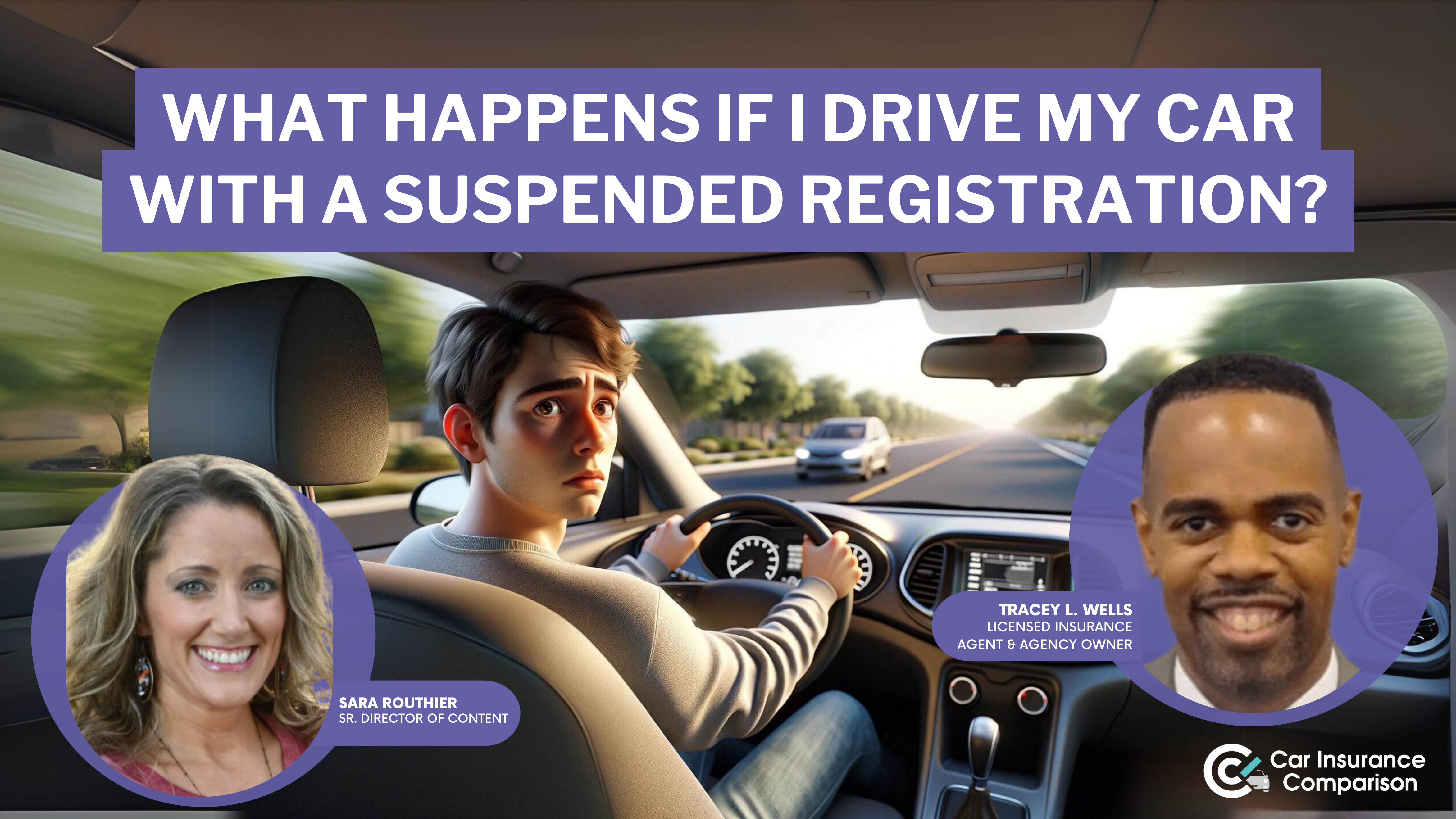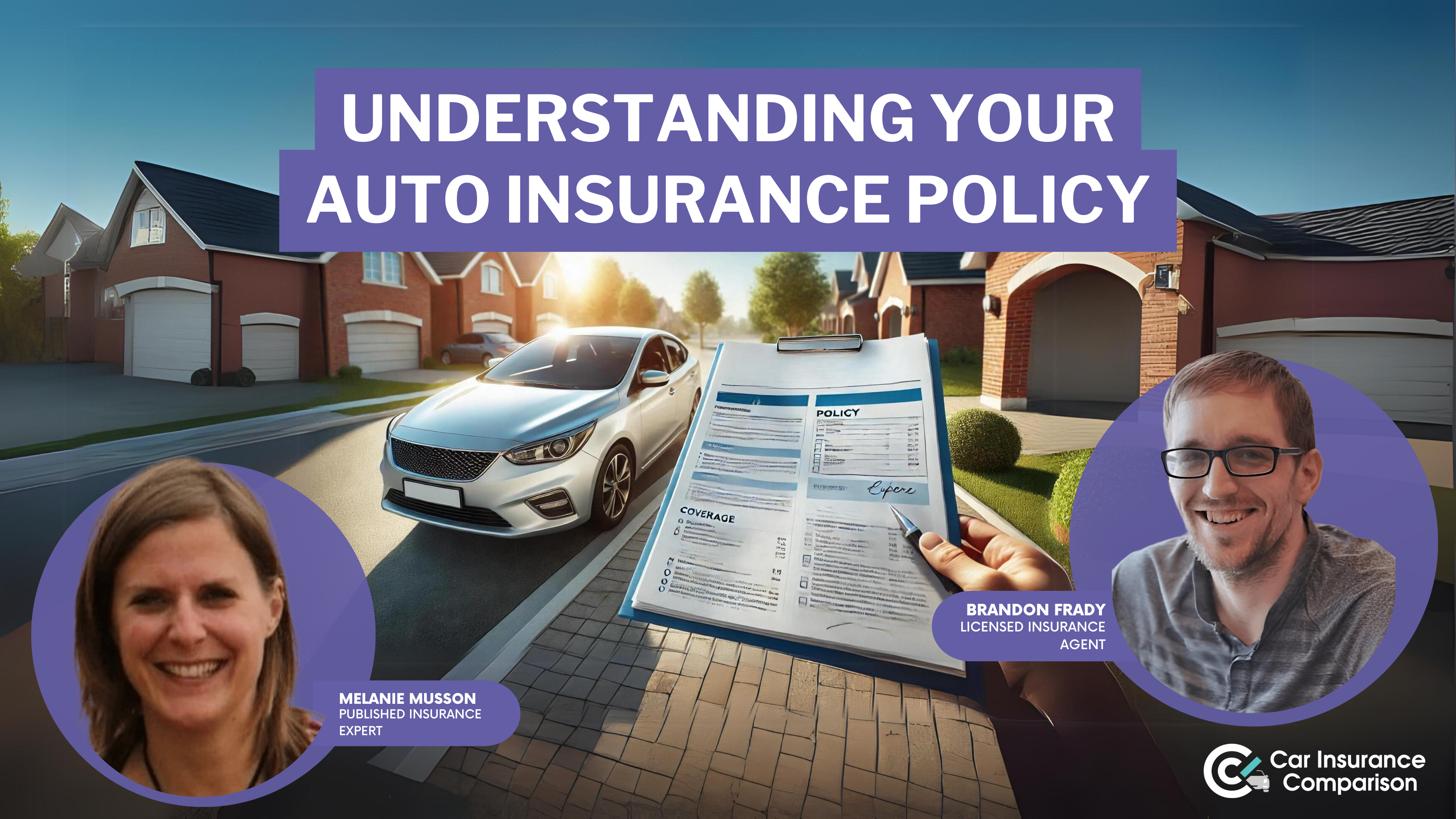Car Insurance Deductible: Explained Simply
A car insurance deductible is a fee paid to an insurance company to cover some of the damages after an accident. Read on to learn more about how a deductible works and why it matters.
Read more Secured with SHA-256 Encryption





Table of Contents
Table of Contents


Insurance and Finance Writer
Alexandra Arcand is an outreach administrator and insurance expert located in North Central Ohio. She has a passion for writing, investing, and education. As an insurance content writer for over three years, Alexandra has first-hand experience in business finance, economics, and real estate. She leads an outreach writing team that specializes in travel, real estate, healthcare, law, finance, an...
Alexandra Arcand


Licensed Insurance Agent
Brandon Frady has been a licensed insurance agent and insurance office manager since 2018. He has experience in ventures from retail to finance, working positions from cashier to management, but it wasn’t until Brandon started working in the insurance industry that he truly felt at home in his career. In his day-to-day interactions, he aims to live out his business philosophy in how he treats hi...
Brandon Frady
Updated September 2024
When purchasing car insurance, drivers have a lot of coverage options. Unlike liability insurance, other coverages, such as collision insurance, comprehensive insurance, personal injury protection, and uninsured/underinsured motorist property damage, may require drivers to pay a deductible. This deductible ensures the driver assumes a portion of the financial responsibility for the costs associated with property damage or bodily injury before the insurance company covers the rest.
Knowing car insurance definitions for common terms and coverages is important to ensure you know what your policy covers. It can also help you make informed decisions when selecting the appropriate coverage options for your specific needs and budget. One common term to familiarize yourself with is “deductible.”
This refers to the amount of money you must pay out of pocket before your insurance coverage kicks in to cover the rest of the expenses in the event of a claim. Choosing a higher deductible usually means lower premiums, but it also means you’ll have to pay more upfront if an accident occurs.
Understanding how deductibles work in car insurance can help you save money if you end up in an accident. We’ll explain what a deductible is, how it works, and how it can impact your total cost of car insurance.
- A car insurance deductible is a fee paid by the driver to the insurance company to cover the remaining cost of vehicle repair following an accident
- The higher the deductible, the lower the insurance premium
- The most common car insurance deductible is $500, but drivers can often choose between $250, $500, $1,000 or higher, depending on the car insurance company
What is a car insurance deductible?
A deductible is a fee paid by drivers to the insurance company to cover the cost of property damage after an accident. It is typically associated with collision insurance, comprehensive insurance, personal injury protection, and uninsured/underinsured motorist property damage, which are optional coverages that drivers purchase for additional protection beyond liability car insurance.
Read more: Zero-Deductible Car Insurance: Explained Simply
Free Insurance Comparison
Compare Quotes From Top Companies and Save
Secured with SHA-256 Encryption
How does a car insurance deductible work?
Here’s an example of how a car insurance deductible works.
You rear-end another driver and cause $2,650 worth of damage to your vehicle. You’ll file a claim with your insurance company and pay the agreed deductible of $500, or whatever amount you selected when you purchased or renewed your car insurance policy. Then your insurance company will cover the difference for the cost of repair, which is $2,150.
What is the average cost of a car insurance deductible?
Insurance companies typically offer $250, $500, or $1,000 deductibles, but they can go as high as $2,500. The most common deductible is $500, according to Kelley Blue Book.
How Deductibles Affect Car Insurance Premiums
Drivers choose their deductible when purchasing or renewing their car policy, but certain insurance companies allow drivers to modify their deductible at any time during their policy term. The higher the deductible, the more you save on your car insurance premium because you are choosing to pay for more of the property damage in the event of an accident. However, you end up paying more out of pocket, which could cancel out any savings on your premium.
Choosing a Car Insurance Deductible
Not only do drivers have to decide if they want to purchase any or all of the optional car insurance coverages, they also have to choose a deductible.
Here’s what to consider when choosing a deductible:
- Ownership status. Did you lease or finance the vehicle, and is a certain deductible required by the lender or dealership?
- Deductible’s impact on premium. Which deductible will lower your premium the most?
- Affordability. Can you afford the premium and the deductible?
- Likelihood of filing a claim. Are you a safe driver who has gone claims-free?
- Value of vehicle. What is the value of the vehicle, and would it be worth it to pay a deductible?
You can confirm with your insurance company how much each coverage and deductible will impact your premium during the purchase or renewal process. Depending on the insurance company, you can adjust your coverage and deductible anytime, which will impact your premium.
What are my options if I can’t pay my deductible?
Oftentimes, drivers must pay the deductible before repairs are made to their vehicle. Since a deductible is an out-of-pocket expense, drivers want to pick an amount they can easily afford in the event of an accident. Picking a higher deductible may save you on the premium, but what happens when you can’t afford to pay your $1,000 deductible?
Fortunately, you have a few different options if you can’t afford to pay your deductible.
- Negotiate a payment plan with the repair shop or your insurance agent.
- Take out a personal loan.
- Get a cash advance from a credit card.
- Borrow money from a friend or family member.
Filing a claim may not be necessary, especially if the damage is cosmetic. As long as the vehicle is safe to drive, you have the option to not file a claim and have the damage repaired at a later time.
Does fault matter when paying an auto insurance deductible?
Yes, fault in an accident matters when paying a deductible. Following an accident, drivers have the option to not file a claim, to file a claim with their own insurance, or to file a liability claim with the at-fault driver’s insurance.
If you are at fault for an accident, you would only pay a deductible if you file a claim with your insurance company. The other driver’s property damage and bodily injury is covered by your liability insurance.
When the other driver is at fault, you file a claim with their liability insurance. However, you could file a claim with your insurance and pay a deductible, which could be reimbursed once your insurance company settles with the at-fault driver’s insurance company.
In some cases, fault is shared in the accident. When this happens, you may pay all or part of the deductible before insurance covers the remaining cost of repair or replacement.
Free Insurance Comparison
Compare Quotes From Top Companies and Save
Secured with SHA-256 Encryption
What is covered by collision and comprehensive insurance?
Both collision and comprehensive insurance cover property damage; however, the cause of the damage to your vehicle will determine the type of claim you file and which deductible you pay.
Collision car insurance covers the following:
- Accidents with other vehicles
- Potholes
- A rollover
- Collision with an object, such as a telephone pole, mailbox, or guardrail
Comprehensive car insurance covers the following:
- Fire
- Vandalism
- Theft (entire vehicle or parts)
- Contact with an animal
- Riot
- Natural disasters (flood, hurricane, tornado, earthquake)
What is the maximum auto insurance payout for claims?
The maximum car insurance payout equals the coverage limit and the vehicle’s pre-accident value minus the deductible, or the cost of repairs minus the deductible, depending on the type of claim filed.
Vehicles are considered totaled when:
- The cost of repairs exceeds the vehicle’s pre-accident value.
- The cost of repairs exceeds a percentage of the vehicle’s value, which is usually based on the state’s total loss threshold.
- The vehicle would be considered unsafe to drive even after it is repaired.
For example, let’s say you’re involved in an accident that causes $4,000 worth of damage to your vehicle that is worth $3,000. You pay your $500, and your insurance company would pay out $2,500, which is the value of your vehicle minus the deductible.
Allstate, Liberty Mutual, and other insurance companies offer new car replacement, which replaces the totaled vehicle with a vehicle of the same make, model, and year.
Ways to Lower Your Car Insurance Costs
As mentioned, the most common car insurance deductible is $500, but it is not the lowest or highest deductible available. It may be tempting to choose the lowest deductible offered, which is often $250, but the problem with doing this is your insurance premium will be high.
Rather than choosing a high deductible for your car insurance, consider alternative ways to save on your premium and lower your car insurance deductible.
- Shop around. Review quotes from different auto insurance companies and compare costs.
- Bundle two or more insurance policies. Most auto insurance companies encourage drivers to purchase multiple insurance policies by offering a bundling discount.
- Remove/adjust coverage. When purchasing or renewing your car insurance, review your policy to confirm what coverage you need, adjust limits, and/or remove unnecessary coverage.
- Improve your credit score. Drivers with poor credit scores often have higher insurance premiums because they are more likely to file a claim. Raising your credit can get you a lower rate because drivers with higher credit scores tend to be safe and responsible when behind the wheel.
- Discounts. All insurance companies offer discounts. Review the available discounts from your insurance company to confirm which discounts have been applied to your premium and which discounts you might qualify for.
Drivers can also save money on car insurance by being safe, responsible drivers. Having no traffic violations or accidents on your record can positively impact your premium.
Case Studies: Understanding Car Insurance Deductibles
Case Study 1: Reducing Premiums with a Higher Deductible
John, a responsible driver, has maintained car insurance with SafeDrive Insurance for several years. Looking to reduce his insurance premiums, he decides to increase his deductible from $500 to $1,000. A few months later, John unfortunately gets into a minor accident, resulting in $1,500 worth of damages.
As per his policy, he needs to pay the first $1,000 (his deductible) out of pocket. SafeDrive Insurance covers the remaining $500, and John is pleased to see a reduction in his monthly premium payments as a result of his higher deductible.
Case Study 2: Unexpected Repairs and a Low Deductible
Sara has a comprehensive car insurance policy with Reliable Auto Insurance, which includes a low deductible of $250. One day, her vehicle is hit by a falling tree during a storm, causing extensive damage totaling $4,000. Since her deductible is relatively low, Sara only needs to pay $250 out of pocket.
Reliable Auto Insurance covers the remaining $3,750, and Sara is relieved that the financial burden of the repairs is manageable due to her low deductible.
Case Study 3: Trade-offs and Moderate Deductibles
Michael is a careful driver who has opted for a moderate car insurance deductible of $750 with TrustShield Insurance. Unfortunately, he gets rear-ended while waiting at a stop sign. The damage to his car is estimated at $2,500. Michael is responsible for paying the first $750, his deductible, and TrustShield Insurance covers the remaining $1,750.
Although he has to bear a higher out-of-pocket cost than in Case Study 1, Michael finds comfort in the fact that his moderate deductible strikes a balance between affordability and financial protection.
Case Study 4: Costly Collision and a High Deductible
Sophia has a collision insurance policy with SecureRide Insurance, featuring a high deductible of $2,000. Unfortunately, she is involved in a major accident that results in significant damage to her car amounting to $15,000. Sophia must pay the first $2,000 (her deductible) out of pocket, and SecureRide Insurance covers the remaining $13,000.
Although the high deductible requires a substantial upfront payment, Sophia understands that it can help lower her insurance premiums over time.
Bottom Line: Choose a Car Insurance Deductible You Can Afford
Drivers are encouraged to choose a deductible they can afford. Not only will your premium be impacted by your deductible, but you’ll have an additional out-of-pocket expense to cover before your insurance pays for the remaining cost of repairs for your vehicle. While a $1,000 deductible gets you a lower premium, can you afford to pay $1,000 if you were involved in an accident?

Frequently Asked Questions
Is there a difference between a deductible and a premium?
An insurance premium is the amount you pay for auto insurance coverage during a specified term of six or 12 months. A collision or comprehensive insurance deductible is a fee paid when you file a claim to cover property damage.
What happens if my auto insurance deductible costs more than the repair?
Insurance companies do not pay for vehicle repairs unless the cost is higher than the deductible. If the deductible costs more than the repair, drivers pay out of pocket for the repair.
Which types of car insurance coverages have a deductible?
Drivers will have a deductible for collision and comprehensive insurance. Liability does not carry a deductible, but there are coverage limits, meaning insurance will only pay up to a certain amount for property damage and bodily injury when a liability claim is filed after an accident. Additionally, add-on coverages, including roadside assistance and rental reimbursement, have coverage limits.
How much are car insurance deductibles?
Car insurance deductibles are typically $250, $500, or $1,000.
What is the maximum insurance payout for collision and comprehensive claims?
When collision and comprehensive claims are filed, the maximum insurance payout equals the totaled vehicle’s pre-accident value minus the deductible, or the cost of repairs minus the deductible.
Insurance companies consider vehicles totaled when:
- The cost of repairs exceeds the vehicle’s pre-accident value.
- The cost of repairs exceeds a percentage of the vehicle’s value, which is based on the state’s total loss threshold.
- The vehicle will be unsafe to drive regardless of repairs.
If you’re at fault for an accident that causes $4,000 worth of damage to your vehicle that is worth $3,000, you pay your deductible of $500, and the insurance company would pay you $2,500, which is the value of your vehicle minus the deductible
What are my options if I can’t pay my deductible?
If you cannot pay your deductible, consider the following:
- Negotiate a payment plan with the repair shop or your insurance agent.
- Take out a personal loan.
- Get a cash advance from a credit card.
- Borrow money from a friend or family member.
If you are concerned about your ability to cover the deductible, consider paying a higher premium and selecting a lower deductible you can afford.
Get a FREE Quote in Minutes
Insurance rates change constantly — we help you stay ahead by making it easy to compare top options and save.







